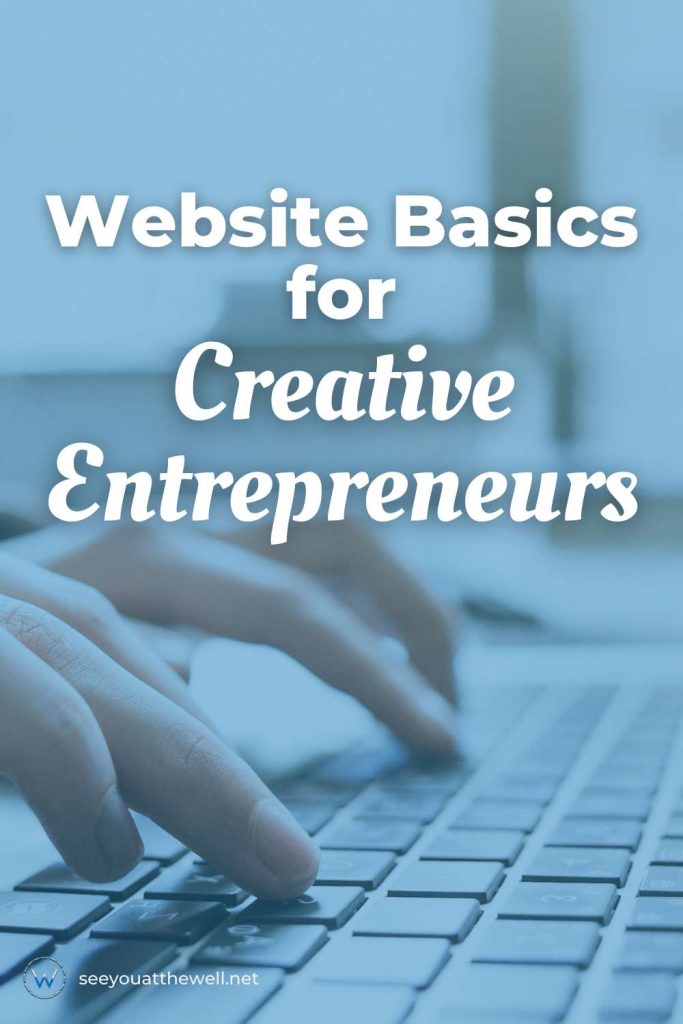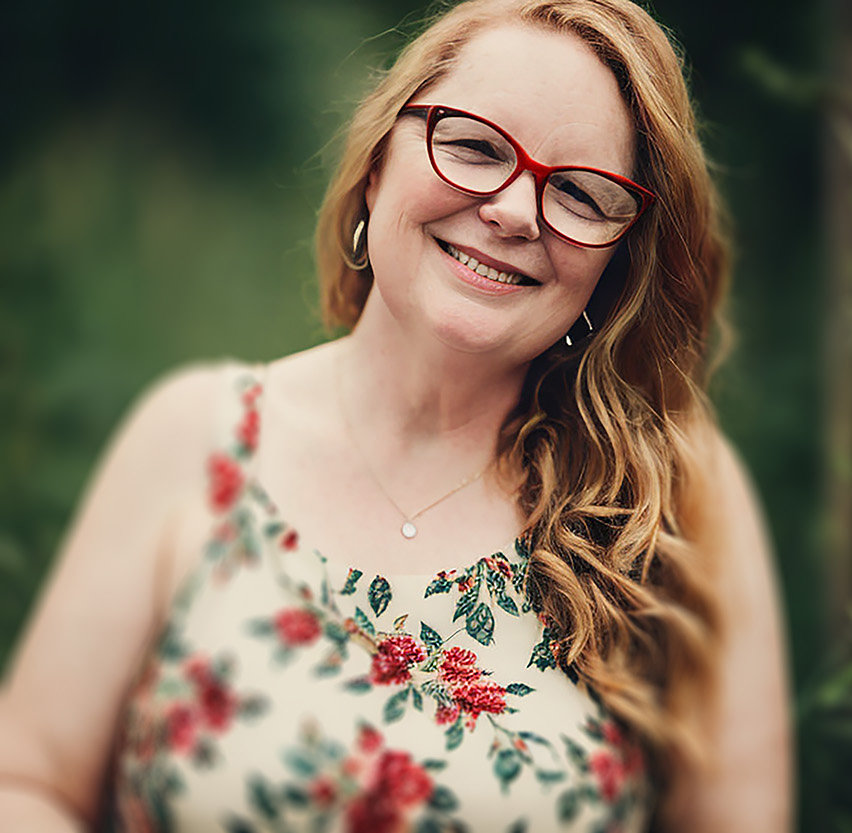When you are thinking about getting a website or growing an existing site, there are some basics you need to consider, as a creative entrepreneur.
The Basic Tools of the Trade
To start, there are some basic tools you’ll need to set up your website.
The first is a domain name. This is your “yourname.com”. This domain name helps others find your website by providing an address.
For domain names, there are more options than just .com. You can even buy a .art or a .author domain name for your site. For a creative entrepreneur, using your name is usually easiest.
When purchasing a domain name, you should make sure it’s easy to spell and remember, to make sure no one types it wrong into a web browser.
A domain name is sometimes included with your web hosting service, which is the next thing you need. Web Hosting is the place where your websites’ files are stored, so people can see your website.
There are many different kinds of web hosting, but for the beginner, simple shared web hosting would suit you just fine. You’ll pay as little as $3 a month for it.
Even if you are going to use WordPress for your website, you do not need WordPress hosting, as WordPress can be installed on any web hosting that has an SQL database. I’ve worked with WordPress since it first came out. As far as I can tell, the only thing WordPress hosting does for you is install WordPress.
Next, you’ll need a platform. I recommend WordPress as it’s easy to use, can grow with your business, and is very affordable. WordPress itself is free, and can be used with any basic web hosting, unlike other platforms.
Other options some enjoy using include Squarespace and Wix, but I find these do not grow with you as easily, and I find their terms of use concerning.
The Design Part
You’ll also need some kind of template, called a Theme in WordPress. Most people hire a web designer to do the basic setup, if they can. But if you’re starting out on a shoestring budget, there are many free themes at wordpress.org which can be adjusted using the theme customizer without code.
In my experience, many paid themes from third party websites are difficult to use, unforgiving when customizing, and just generally frustrating. And I say that as a web designer.
You want to always keep your site layout clean and simple. If you get too cute, clever, or fancy, you’ll confuse the average visitor. And, always remember,
“The Confused Mind says No.”
a common saying in marketing
If someone doesn’t understand what to do next, they will leave. Go for clarity over fancy.
My favorite theme to work with is Astra, which can be customized very easily and loads fast. It’s free with some paid options. Nearly everything in Astra can be customized in the WordPress dashboard without code (go to appearance > customize).
On a side note, I’m excited to launch the Well’s new website redesign soon. Stay tuned!
The Most Important part of your website
Even more important than all of that is the actual content you’ll put on your website.

You’re probably assuming that, since I’m a web designer, I’m going to advise every artist or author they need to start with a website. You would assume wrong.
I’ve been creating websites long enough to view starting a website differently from most of my fellow web designers. If you are just starting your creative business, you’re going to want to hold off on a website for a little while anyway.
A website in itself is not a magical key to success. Websites are only as good as the messages they are used to convey.
In other words, copywriting and web design need to work together. Without your messaging nailed down, your website is not likely to succeed.
To sell your creative goods and make a living creating, you need to figure out how to talk about who you are and what you do in such a way that it resonates with those who will buy.
Your messaging cannot simply be, “Buy my stuff so I don’t have to wait tables!”
From the artists I’ve helped with websites, and the artists I’ve bought from and connected with, I have noticed that successful artists have a way of telling their story and inviting you to become a part of it, thus buying a piece, or at least a print, to share in the story.
The problem with creative souls like you and me is simple. We’re too much in our own heads.
You no doubt could come up with some great copy for your website if you wanted to. Unless it feels comfortable in your mouth and connects with those likely to buy your art, it won’t work.
This is where the delay in creating a website comes in.
The clients I have had who have succeeded best are those who come into a website or branding project already certain of who they are, who they serve, and their basic messaging.
Put yourself out there
Where do you start then? You start by sharing pieces of your messaging out there in the universe…the real world…in front of real people.
If this sounds terrifying, you’d be correct. It is.
It’s so much easier to put something up on a website than it is to share it publicly on Facebook where people who actually know you will see and comment on it.
I deleted about 100 blog posts a few months ago because I realized part of the problem with my messaging was that it was untested. It failed because I kept it hidden until the day when I lifted the cover and said, “VOILA!” and no one responded.
You don’t have to join the Chamber of Commerce or anything like that. But you do need to practice talking about yourself and your craft publicly via social media, friends, and so forth until you figure out the best, most authentic way for you to communicate about your creative endeavor. And you figure out what kinds of things, within your wheelhouse, real, live people would probably buy from you.
If you aren’t sure what your why is, and your “story” beyond your art and inspiration, start talking about it in smaller segments. Test it out. Put it out there. Talk about who you are, what you’re about, what your art is all about…BEFORE you ever get a website.
Your website cannot ever be something pretty to dump words into. Your website’s design has to accentuate your messaging, helping it be noticed and received. Therefore, get your messaging solid first, then worry about a website.
Understanding Search Engines and Your Website
Early on as a website designer (which I’ve been doing for over 15 years now), I had a client show up at my door, screaming at me about scamming him because he can’t find his website. I was completely confused until I realized what he was talking about.
Instead of typing his domain name in the address bar, he was searching for it in Google…three days after I built the site.
I’ve since learned, many don’t understand how search engines work, and how traffic finds your website.
It would be a minor miracle for a website to show up in Google 3 days after it was completed. Google and other search engines take time to index the content of your website, and to decide whether or not you are valuable to show to those using their platform to search. Google is there to serve those who use the platform to search for information. They help them by providing what they deem the best, most accurate and valuable information to meet that need.
For example, if someone is searching for “Web designers in Mid Michigan”, I may not come up on top. I’m slowly working my way up the ladder though. How do I move up? I have to become a better, more valuable search result than everyone else that ranks ahead of me for that search term. Thankfully there aren’t many results to compete with, so I’ve moved up fairly quickly. I’m at the top for Tuscola County. But if someone searches for “web designer” I’m probably somewhere in the middle of a million search results because that’s too general.
So, as you come up with your messaging, you also need to consider what your target audience is going to be searching for, and use those sorts of words in your content to help the search engines flag your site as a potential result to show.
Search engine optimization is a bit more complicated than that, of course, and there are many factors that go into getting your website to rank high in search engines. But in general, creating valuable content that serves your audience and uses words they would use is the best place to start.

